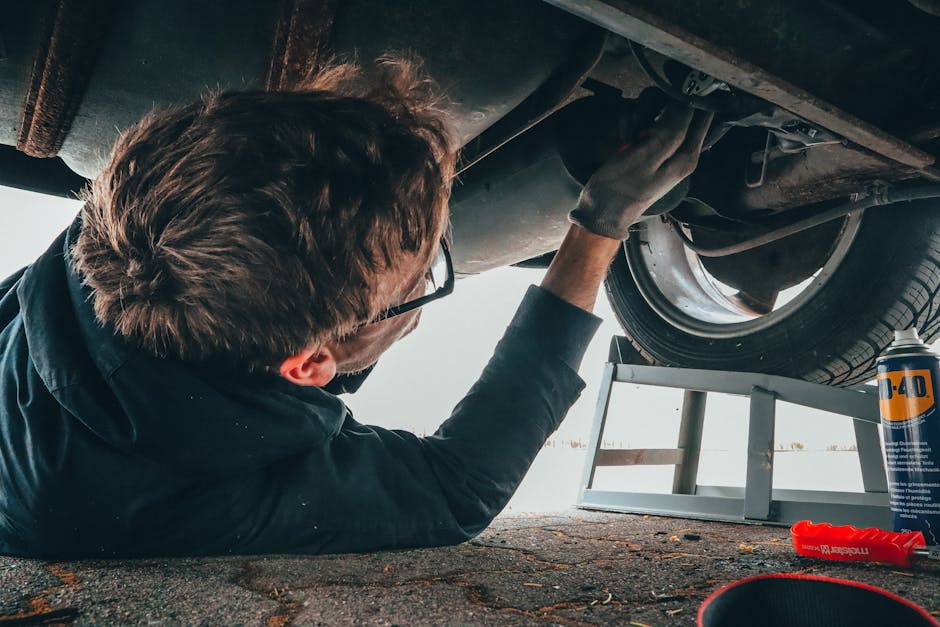How to Optimize Parts Ordering and Minimize Waste in Your Auto Repair Shop

Introduction
In the fast-paced world of auto repair, managing parts ordering efficiently is not just a matter of good practice—it's essential for minimizing waste and maximizing profitability. Many auto repair shops struggle with excess inventory or, conversely, parts shortages that can delay service delivery. In this article, we will explore effective strategies to optimize parts ordering and minimize inventory waste, ensuring your shop runs smoothly and profitably. We will also highlight software solutions that can streamline these processes.

Table of Contents
Understanding the Importance of Optimized Parts Ordering
Parts ordering is a critical function in any auto repair shop. Efficient parts management helps in maintaining a balance between supply and demand, preventing overstock and stockouts—both of which can lead to financial losses. Let's dive into the key benefits of optimizing your parts ordering process:
- Cost Reduction: By minimizing waste, you can significantly reduce costs associated with excess inventory, such as storage and insurance.
- Improved Customer Satisfaction: Streamlined parts ordering leads to quicker turnaround times, enhancing customer service and loyalty.
- Better Cash Flow Management: Efficient inventory management frees up cash that can be invested in other areas of your business.
Steps to Optimize Parts Ordering
To effectively optimize your parts ordering process, consider the following steps:
1. Analyze Parts Usage
Start by reviewing historical data on parts usage. Understand which parts are frequently used and which are not. This data will help you identify trends in your ordering patterns, allowing you to stock what you need without overspending on less popular items.
2. Implement a Just-In-Time (JIT) Ordering System
A just-in-time ordering system helps minimize inventory waste by ordering parts only when they are needed. This approach reduces the amount of inventory on hand and lowers storage costs. Tools like PartsTech can help facilitate JIT ordering by connecting you with suppliers for quick access to parts.
3. Utilize Inventory Management Software
Investing in auto shop inventory software can significantly enhance your parts ordering efficiency. These tools can automate stock monitoring and reorder processes based on predefined thresholds. Software solutions like NAPA TRACS and ALLDATA provide comprehensive inventory management features that allow for real-time updates and tracking.
4. Establish Strong Relationships with Suppliers
Building solid relationships with suppliers can lead to better pricing, priority service, and flexible ordering options. Regular communication with suppliers can also help you stay informed about new products and potential bulk discounts, further optimizing your parts ordering.
5. Forecast Demand Accurately
Utilizing sales data and market trends can help you forecast parts demand more accurately. Look at seasonal trends, local market conditions, and upcoming vehicle models that may influence parts usage. By aligning your orders with demand, you can avoid overstocking and minimize waste.
The Role of Technology in Parts Ordering Optimization
Technology plays a pivotal role in optimizing parts ordering. Here are some advanced technologies that can help:
1. Cloud-Based Solutions
Cloud-based inventory management software auto shop solutions provide real-time access to inventory data from anywhere. This flexibility can help you manage orders effectively, even when you are not physically present in the shop.

2. Automated Reordering
Many modern inventory systems allow for automated reordering based on predefined stock levels. This ensures that your shop never runs out of essential parts, thus maintaining a steady workflow and minimizing downtime.
3. Integrating Accounting Software
For comprehensive management, you should consider auto shop system integration. Connecting your inventory management with accounting software can streamline financial operations, providing a clearer picture of costs associated with parts ordering.
Minimizing Inventory Waste: Strategies and Best Practices
Minimizing inventory waste is crucial for an auto repair shop’s success. Here are strategies to achieve this:
1. Regular Inventory Audits
Conducting regular inventory audits helps you keep track of what you have on hand. By identifying slow-moving parts, you can make informed decisions about future orders.
2. Dispose of Obsolete Stock
Quickly identify and dispose of outdated or obsolete stock to free up space and resources. This not only clears your inventory but also eliminates the costs associated with holding such parts.
3. Optimize Storage Space
Ensure that your storage area is organized efficiently. Proper storage can prevent damage to parts and make it easier to find what you need when you need it. Consider using a digital inventory system to improve accessibility.
4. Employee Training
Train your staff on best practices for parts ordering and inventory management. An informed team will be better equipped to make decisions that minimize waste and optimize inventory levels.

Conclusion
Optimizing parts ordering and minimizing waste in your auto repair shop is a multifaceted challenge that requires careful planning, effective use of technology, and a commitment to continuous improvement. By analyzing parts usage, implementing a JIT system, utilizing software solutions, and maintaining strong supplier relationships, you can create a streamlined process that benefits both your business and your customers. To discover comprehensive tools that can aid in this optimization, find the right auto repair software that fits your unique needs and enhances your operational efficiency. Together, these strategies can lead to a more profitable and sustainable auto repair shop.
Frequently Asked Questions
What are the 3 C's of auto repair?
The 3 C's of auto repair are Communication, Customer service, and Competence. Effective communication ensures clear understanding between mechanics and customers, while excellent customer service builds trust. Competence refers to the skills and expertise of the technicians, which is essential for quality repairs.
How to make an auto shop more efficient?
To enhance efficiency in an auto shop, streamline workflows by using auto repair shop software that integrates parts ordering and inventory management. Implementing a well-organized scheduling system and training staff on best practices can also help reduce downtime and improve service delivery.
What are the biggest challenges for auto repair shops?
Auto repair shops often face challenges like managing inventory levels, dealing with parts shortages, and maintaining competitive pricing. Additionally, staying updated with technology and customer expectations can be daunting, making it crucial to adopt efficient systems and practices.
How to organize auto parts inventory?
To organize auto parts inventory effectively, categorize parts by type and usage frequency, and label storage areas clearly. Using auto repair shop software can help track inventory levels in real-time, automate reordering processes, and minimize excess stock, leading to a more efficient operation.
